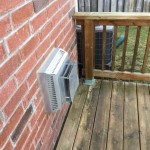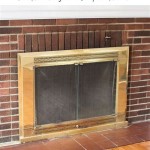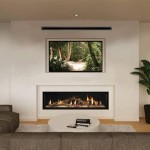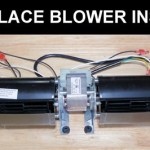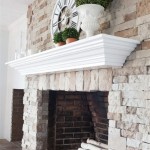Ceiling Hanging Fireplace Designs: A Comprehensive Guide
Ceiling hanging fireplaces, also known as suspended fireplaces, have emerged as striking architectural features in modern and contemporary homes. Their unique design, which involves suspending the fireplace from the ceiling, creates a focal point that combines functionality with aesthetic appeal. This article provides a detailed examination of ceiling hanging fireplace designs, exploring their various types, installation considerations, design possibilities, and safety aspects.
Unlike traditional fireplaces that are built into walls or stand on the floor, ceiling hanging fireplaces offer a sense of openness and visual lightness. This design can be particularly advantageous in smaller spaces, where a conventional fireplace might overwhelm the room. The suspended nature of these fireplaces also allows for greater flexibility in terms of placement, enabling them to be positioned in the center of a room or in unconventional locations.
The evolution of ceiling hanging fireplace designs reflects a shift towards minimalist aesthetics and innovative engineering. Early models often featured simple shapes and materials, while contemporary designs incorporate advanced technologies and a wider range of finishes. This allows homeowners to choose a fireplace that not only provides warmth but also complements their interior decor.
Types of Ceiling Hanging Fireplaces
Ceiling hanging fireplaces are available in various types, each distinguished by its fuel source, design, and functionality. Understanding these different types is essential for selecting the most suitable option for a particular space and lifestyle.
One common type is the wood-burning ceiling hanging fireplace. These fireplaces evoke a traditional ambiance with the crackling sounds and authentic aroma of burning wood. However, they require a chimney or flue system for proper ventilation and emissions control. Wood-burning models typically feature a firebox made of cast iron or steel, surrounded by a decorative enclosure. Maintenance involves regular cleaning of the firebox and chimney to remove ash and soot buildup.
Gas ceiling hanging fireplaces offer a more convenient alternative to wood-burning models. They operate on natural gas or propane, providing instant heat and easy temperature control at the turn of a knob or click of a remote. Venting options for gas fireplaces include direct vent and vent-free systems. Direct vent fireplaces vent exhaust gases directly to the outside through a sealed pipe, while vent-free fireplaces burn fuel more efficiently and do not require a chimney, but they necessitate proper ventilation to prevent the buildup of carbon monoxide.
Electric ceiling hanging fireplaces represent the most versatile and environmentally friendly option. They do not require any fuel or venting, making them easy to install and operate. Electric fireplaces use electric heating elements to generate heat, and many models feature realistic flame effects that mimic the appearance of a real fire. They are also often equipped with thermostats and timers for precise temperature control. Electric fireplaces are a suitable choice for apartments, condominiums, and other spaces where installing a traditional fireplace is not feasible. Some modern electric models even incorporate LED lighting and smart home control capabilities, allowing users to adjust the flame intensity and even color of the flame.
Installation and Structural Considerations
Installing a ceiling hanging fireplace requires careful planning and adherence to safety regulations. The structural integrity of the ceiling is a critical factor that must be assessed to ensure that it can support the weight of the fireplace and its associated components. A qualified structural engineer should evaluate the building's architecture to determine the appropriate load-bearing capacity and recommend any necessary reinforcements.
The installation process typically involves attaching the fireplace to a ceiling joist or beam using specialized hardware and mounting brackets. The type of hardware used will depend on the fireplace's weight, the ceiling's construction material, and local building codes. Professional installation is highly recommended to ensure that the fireplace is securely mounted and meets all safety standards.
Venting requirements vary depending on the type of fireplace. Wood-burning fireplaces require a chimney or flue system that extends vertically through the roof to exhaust smoke and combustion gases. Gas fireplaces may use direct vent systems that vent horizontally to the exterior wall or vent-free systems that do not require any venting. Electric fireplaces do not require any venting. However, proper electrical wiring is essential to ensure safe and reliable operation. The electrical circuit should be able to handle the fireplace's power requirements, and a dedicated circuit may be necessary.
Clearance requirements also need to be considered during installation. The fireplace should be positioned at a safe distance from combustible materials such as furniture, curtains, and wood paneling. Building codes typically specify minimum clearance distances to prevent fire hazards. Additionally, the fireplace should be installed in a location that allows for easy access for maintenance and cleaning.
Design Possibilities and Aesthetic Appeal
Ceiling hanging fireplaces offer a wide range of design possibilities, allowing homeowners to customize their look to match their personal style and interior decor. The shape, size, and finish of the fireplace can be tailored to create a unique focal point in the room.
The shape of the fireplace can range from classic round or oval designs to more contemporary geometric shapes. Round fireplaces provide a soft, organic feel, while square or rectangular fireplaces offer a more modern and angular aesthetic. Some designs incorporate curved or asymmetrical shapes to create a dramatic visual effect.
The finish of the fireplace can also be customized to complement the room's color scheme and materials. Common finishes include painted metal, stainless steel, powder-coated finishes, and even custom-designed finishes that incorporate materials such as stone, glass, or wood. The choice of finish can influence the fireplace's overall appearance and impact.
The integration of the fireplace with other design elements in the room is also important. The fireplace can be coordinated with the surrounding furniture, lighting, and artwork to create a cohesive and harmonious design. For example, a minimalist fireplace with a brushed stainless-steel finish might be paired with contemporary furniture and a neutral color palette. Alternatively, a rustic fireplace with a weathered steel finish could be combined with natural wood elements and earthy tones.
Lighting can be used to enhance the fireplace's aesthetic appeal. Spotlights or recessed lighting can highlight the fireplace's shape and finish, while accent lighting can create a warm and inviting ambiance. The flame itself also provides a natural source of light, which can be particularly effective in creating a cozy atmosphere.
Finally, the surrounding area around the fireplace can be designed to complement its overall look. A hearth made of stone, tile, or glass can provide a visual transition between the fireplace and the floor. Decorative elements such as vases, sculptures, or plants can also be added to enhance the fireplace's aesthetic appeal.
Safety and Maintenance Considerations
Safety is paramount when it comes to ceiling hanging fireplaces. Regular maintenance is also essential to ensure safe and efficient operation.
Carbon monoxide detectors should be installed in the vicinity of the fireplace, regardless of the fuel source. Carbon monoxide is a colorless and odorless gas that can be produced by incomplete combustion. Detectors will alert occupants to the presence of dangerous levels of carbon monoxide, allowing them to take prompt action.
Smoke detectors are also essential for fire prevention. They should be installed in multiple locations throughout the home, including near the fireplace. Smoke detectors will provide an early warning in the event of a fire, giving occupants time to evacuate safely.
Regular cleaning of the fireplace is necessary to prevent the buildup of soot, ash, and other debris. Wood-burning fireplaces require more frequent cleaning than gas or electric fireplaces. The chimney or flue should be inspected and cleaned annually by a qualified professional to ensure proper ventilation and prevent the risk of chimney fires. Gas fireplaces should be inspected annually to ensure that the gas lines and burners are in good condition. Electric fireplaces require minimal cleaning, but the heating elements should be checked periodically for any signs of damage.
Proper ventilation is crucial for all types of fireplaces. Wood-burning fireplaces require adequate airflow to ensure complete combustion and prevent the buildup of smoke in the room. Gas fireplaces require proper venting to exhaust combustion gases to the outside. Electric fireplaces do not require any venting, but the room should be well-ventilated to prevent the buildup of heat and humidity.
Fire extinguishers should be readily accessible in case of a fire. A multipurpose fire extinguisher that is rated for Class A, B, and C fires is suitable for most household fires. Fire extinguishers should be inspected regularly to ensure that they are in good working order.
It is important to educate all household members about fireplace safety. Children should be taught to stay away from the fireplace and never play with fire. Adults should be aware of the potential hazards associated with fireplaces and take precautions to prevent accidents.

25 Hanging Fireplaces Adding Chic To Contemporary Interior Design Floating Fireplace Home

Mounted Fireplace Hanging House Design

Ceiling Mounted Fireplaces 9 Coolest Fireplace Designs Captivatist Freestanding Design Hanging

Indoor Hanging Ceiling Fireplace Manufacture Manufacturers And Suppliers China Brands Hi Flame Metal

Ceiling Hanging Fireplace Manufacturers And Suppliers China Brands Hi Flame Metal

Page Not Found Home Interior Design Kitchen And Bathroom Designs Architecture Decorating Ideas Hanging Fireplace House

8 Stunning Suspended Fireplaces In Every Shape

Ceiling Mounted Fireplaces 9 Coolest Fireplace Designs Captivatist Hanging Modern Design

Advantages Disadvantages Of A Hanging Gas Fireplace Modus Fireplaces

25 Hanging Fireplaces Adding Chic To Contemporary Interior Design Fireplace Suspended
Related Posts


